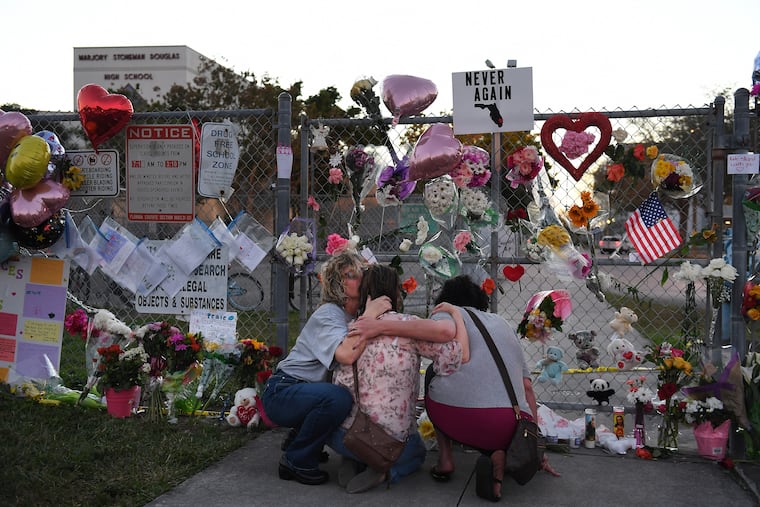A year after Parkland, still not enough research into gun violence prevention | Opinion
More than 80 national medical, public health, and research organizations recently urged the U.S. House of Representatives to provide $50 million in funding to the Centers for Disease Control (CDC) to conduct public health research into gun violence prevention.

One year ago, a gunman opened fire at Marjory Stoneman Douglas High School in Parkland, Fla., killing 17 students and staff members and injuring 17 others. Sadly, a year has come and gone, and I fear that as the headlines faded, so has our resolve as community members to confront the national epidemic of gun violence as the public health threat it is.
As a pediatrician who works in an emergency department, I am reminded daily of how firearm violence impacts my patients and our communities. The presence of gun violence in many of the hospitals where I and my fellow physicians work is as ingrained as the scrubs we wear and the stretchers that wheel into our emergency departments every day. My colleagues and I could share numerous stories of caring for the victims of gun violence. Unfortunately, the families in our communities could tell even more. These are not abstract victims in a news headline. They are real people who represent a public health epidemic we must do more to prevent.
Stories are powerful, but we need data to take a public health approach to this epidemic. For too long, federal policy has prevented the funding of research by the U.S. Centers for Disease Control and Prevention on how to prevent firearm injuries and fatalities.
With congressional action, that could soon change.
More than 80 national medical, public health, and research organizations recently urged the House of Representatives to provide $50 million in funding to the CDC to conduct public health research into gun-violence prevention. Among these groups are the American Academy of Pediatrics, American College of Physicians, and our own Children’s Hospital of Philadelphia.
When it comes to numbers, here’s some of what we do know: In 2016, there were more than 38,000 firearm-related fatalities in the United States. In 2016, an average of 13 young people (ages 10 to 24) died every day from firearm homicide. Here in Pennsylvania, the firearm mortality rate is 12 per 100,000 people -- slightly higher than the national average and higher than any of our neighboring states. What’s more, almost half (532) of all firearm-related injuries in Pennsylvania that year occurred in Philadelphia County.
Whichever story or statistic speaks to you, it is clear we need to know more about this issue. The foundation of a public health approach is rigorous research that can accurately quantify and describe the facets of an issue, thereby identifying opportunities for saving lives and preventing injuries. Federally funded public health research has a proven track record of success, such as reducing deaths caused by motor-vehicle crashes, smoking, or sudden infant death syndrome. We need to apply this same approach to improving gun safety and reducing firearm-related injuries and deaths.
Despite repeated assurances from federal officials that nothing in federal law precludes CDC support of this public health research, without dedicated funding, this critical research simply will not happen. As a community, we need to rise to the occasion and ask our representatives and senators to support $50 million in funding for gun-violence prevention research. We must renew the sense of urgency we had a year ago. Too many lives have been taken by gun violence even since then, and it should not take another tragedy to act.
Christian D. Pulcini, M.D., MEd, MPH, FAAP, is a pediatric emergency medicine fellow at Children’s Hospital of Philadelphia.